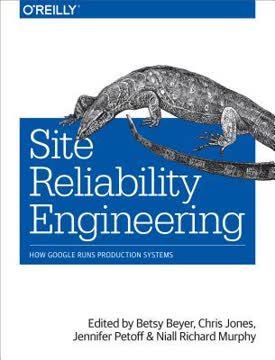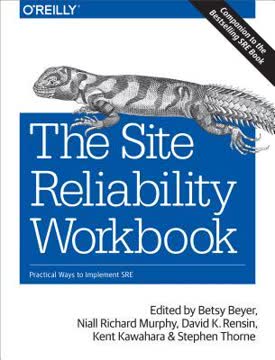つの重要なポイント
1. フレームワークはアプリケーション全体のセキュリティと信頼性を強化する
フレームワークはコードの再利用を可能にする:特定の機能や特徴に影響を与えるすべてのセキュリティと信頼性の側面を考慮するのではなく、開発者は特定のビルディングブロックをカスタマイズするだけでよい。
標準化された保護。 フレームワークは、複数のアプリケーションに共通するセキュリティと信頼性の懸念に対処する一貫したアプローチを提供する。認証、認可、エラーハンドリングなどの重要な機能を集中管理することで、一貫性のない実装から生じる脆弱性の可能性を減少させる。このアプローチにより、ドメインの専門家が安全なビルディングブロックを設計・開発し、フレームワークを使用するすべてのチームに利益をもたらす。
生産性の向上。 フレームワークを使用することで、開発者はセキュリティと信頼性の機能を再発明するのではなく、ビジネスロジックに集中できるため、生産性が向上する。フレームワークには、モニタリング、ロギング、パフォーマンス最適化のためのツールが組み込まれていることが多く、開発プロセスをさらに効率化する。この標準化により、コードのセキュリティと信頼性を一貫して適用することが容易になる。
2. コード設計のシンプルさがセキュリティと保守性を向上させる
YAGNIコードを避けることで信頼性が向上し、シンプルなコードはセキュリティバグが少なく、ミスの機会が減り、未使用のコードの保守に費やす開発者の時間が減る。
複雑さの削減。 シンプルなコードは理解しやすく、レビューしやすく、保守しやすい。YAGNI(You Aren't Gonna Need It)の原則に従い、過剰設計を避けることで、開発者はより堅牢で安全なシステムを作成できる。シンプルなコードは潜在的な故障点が少なく、隠れた脆弱性が含まれる可能性も低い。
保守性の向上。 定期的なリファクタリングと技術的負債の解消は、コードのシンプルさを維持するために重要である。この継続的なプロセスは、複雑で理解しにくいコードの蓄積を防ぎ、セキュリティと信頼性の問題を引き起こす可能性を減少させる。リンターやコードヘルスメトリクスなどのツールは、改善の余地がある領域を特定し、高いコード品質基準を維持するのに役立つ。
3. 強い型付けとサニタイズが一般的な脆弱性を防ぐ
強い型を使用することで、コンパイラが捕捉しないタイプのエラーからコードを保護する。
型の安全性。 強い型付けは、ランタイムではなくコンパイル時にエラーを捕捉し、多くの一般的な脆弱性を本番環境に到達する前に防ぐ。異なるコンテキストに対して特定の型(例:HTMLコンテンツ用のSafeHtml、URL用のSafeUrl)を使用することで、設計上のセキュリティ特性を強制する。このアプローチにより、SQLインジェクションやクロスサイトスクリプティング(XSS)などの脆弱性を導入することが非常に難しくなる。
入力の検証。 適切な入力サニタイズは、セキュリティ脆弱性を防ぐために重要である。ユーザー入力を処理するための専用ライブラリやフレームワークを使用することで、すべてのデータが敏感な操作に使用される前に適切に検証およびサニタイズされることを保証できる。これには以下が含まれる:
- ユーザー生成コンテンツの特殊文字のエスケープ
- URLやファイルパスの検証とサニタイズ
- すべての入力に対する厳密な型チェックの強制
4. ユニットテストは個々のコンポーネントの動作を検証する
ユニットテストは通常、エンジニアリングワークフローの一環としてローカルで実行され、コードベースに変更を加える前に開発者に迅速なフィードバックを提供する。
細かい検証。 ユニットテストは、個々のソフトウェアコンポーネントの動作を単独で検証することに焦点を当てる。このアプローチにより、開発プロセスの早い段階でバグを発見し、統合前に各コンポーネントが正しく機能することを保証する。効果的なユニットテストの実践には以下が含まれる:
- 実際のコードと並行して、または前にテストを書く(テスト駆動開発)
- 通常のケースとエッジケースの両方をカバーする
- 依存関係を分離するためにモックやスタブを使用する
継続的なフィードバック。 ユニットテストを開発ワークフローに統合することで、リグレッションや意図しない副作用を迅速に発見できる。この継続的なフィードバックループは、コード品質を維持し、新しいバグの導入を防ぐ。自動化されたCI/CDパイプラインは、コード変更ごとにユニットテストを実行し、開発者に即時のフィードバックを提供する。
5. 統合テストはシステム全体の相互作用を評価する
統合テストは、個々のユニットや抽象化を超えて、データベースやネットワークサービスなどの抽象化のフェイクやスタブを実際の実装に置き換える。
システムレベルの検証。 統合テストは、システムの異なるコンポーネントがどのように連携するかを評価し、単独でユニットをテストする際には明らかにならない問題を発見する。これらのテストは、データベースやAPIなどの外部依存関係との相互作用を含め、システム全体が正しく機能することを保証する。統合テストの重要な考慮事項には以下が含まれる:
- 現実的なテスト環境の設定
- テストデータの安全な管理
- 非同期操作やタイミングの問題の処理
カバレッジと速度のバランス。 統合テストはシステムの動作に関する貴重な洞察を提供するが、通常、ユニットテストよりも遅く、リソースを多く消費する。チームは包括的な統合テストと迅速なフィードバックループの維持とのバランスを見つける必要がある。リスク評価に基づく選択的な統合テストなどの戦略は、開発速度を犠牲にせずにテストカバレッジを最適化するのに役立つ。
6. 動的解析ツールはランタイムエラーと脆弱性を検出する
動的プログラム解析は、テスト以外の目的でプログラムを実行してソフトウェアを解析する。
ランタイムエラーの検出。 サニタイザなどの動的解析ツールは、静的解析や通常のテストでは明らかにならないさまざまなランタイムエラーや脆弱性を検出できる。これらのツールは、コンパイル時にコードにランタイムチェックを追加し、以下の問題を検出する:
- メモリリークやバッファオーバーフロー
- 解放後の使用エラー
- データ競合やデッドロック
- 未定義の動作
パフォーマンスの考慮。 動的解析ツールは貴重な洞察を提供するが、パフォーマンスに大きな影響を与える可能性がある。チームはこれらのツールを夜間ビルドや専用のテストパイプラインの一部として実行し、徹底的な解析と開発速度のバランスを取る。動的解析から得られる洞察は、バグ修正の優先順位を決定し、全体的なコード品質を向上させるのに役立つ。
7. ファズテストはエッジケースと予期しない入力を発見する
ファズテストは、サービスの回復力をテストするのに役立つ。
自動入力生成。 ファズテストは、大量のランダムまたは半ランダムな入力を生成してバグや脆弱性を発見する。この手法は、手動テストでは見逃されがちなエッジケースや予期しない動作を発見するのに特に効果的である。ファズテストは以下を特定するのに役立つ:
- メモリ破損の問題
- 入力検証の欠陥
- サービス拒否の脆弱性
- ファイル形式やネットワークプロトコルの解析エラー
継続的なファズテスト。 ファズテストを継続的インテグレーションパイプラインに統合することで、チームはシステムの新しい脆弱性を常に探ることができる。コードベースが進化するにつれて、ファズテストは変更によって導入されたリグレッションや新しい問題を発見する。libFuzzerやAFL(American Fuzzy Lop)などのツールは、さまざまなタイプのソフトウェアに対してファズテストを実装するのを容易にする。
8. 継続的な検証がシステムの回復力を確保する
注意深く設計されたテストスイートは、同じタスクを実行する異なるソフトウェアの正確性を評価できる。
積極的な回復力。 継続的な検証は、従来のテストを超えて、さまざまな条件下でシステムを常に運用する。このアプローチは、システムが時間の経過とともに障害や攻撃に対して回復力を維持するのに役立つ。継続的な検証技術には以下が含まれる:
- カオスエンジニアリングの実験
- 定期的な災害復旧訓練
- 自動化されたセキュリティスキャンとペネトレーションテスト
- 現実的な負荷条件下でのパフォーマンスストレステスト
進化する脅威モデル。 システムが成長し進化するにつれて、新しい脆弱性や故障モードが出現する可能性がある。継続的な検証は、これらの課題に先んじるために、システムの回復力を定期的に再評価するのに役立つ。このプロセスには、脅威モデルの更新、テストシナリオの見直し、実際のインシデントやニアミスから得られた教訓の取り入れが含まれるべきである。
最終更新日:
FAQ
What's Building Secure and Reliable Systems about?
- Focus on Integration: The book emphasizes integrating security and reliability into the entire lifecycle of system design, implementation, and maintenance.
- Practical Guidance: It offers practical advice and best practices for organizations of all sizes, from startups to large enterprises.
- Cultural Aspects: The authors discuss the importance of fostering a culture of security and reliability within organizations.
Why should I read Building Secure and Reliable Systems?
- Comprehensive Resource: It serves as a guide for professionals involved in system design and operations, offering insights from experienced practitioners at Google.
- Real-World Examples: The book shares case studies and examples, making the concepts relatable and applicable to various organizational contexts.
- Improving Practices: Readers can learn how to improve their organization's security posture and reliability practices.
What are the key takeaways of Building Secure and Reliable Systems?
- Integration of Principles: Security and reliability should be integrated into every stage of the system lifecycle.
- Crisis Management: Effective crisis management strategies, including incident response planning, are outlined.
- Cultural Importance: A culture that prioritizes security and reliability is essential for resilient systems.
What are the best quotes from Building Secure and Reliable Systems and what do they mean?
- "Security and reliability are inherent properties of a system.": These aspects should be integrated from the beginning.
- "A culture of inevitability can help teams have the appropriate frame of mind to build secure and reliable systems.": Accepting that failures can happen leads to better resilience.
- "Everyone is responsible for security and reliability.": Security and reliability should be a collective effort across the organization.
What is the principle of least privilege in Building Secure and Reliable Systems?
- Definition: Users should have the minimum access necessary to accomplish their tasks.
- Reducing Risk: Limiting access minimizes the potential for mistakes or malicious actions.
- Implementation Strategies: Strategies include using small functional APIs and advanced authorization controls.
How does Building Secure and Reliable Systems define adversaries?
- Understanding Adversaries: Adversaries are individuals or groups that may exploit system vulnerabilities.
- Motivations: Motivations include financial gain, activism, and espionage.
- Frameworks for Analysis: The book provides frameworks for analyzing adversaries, aiding in designing resilient systems.
What role does culture play in security and reliability according to Building Secure and Reliable Systems?
- Cultural Shift: Building a culture of security and reliability is essential for long-term success.
- Empowerment and Training: Training employees and empowering them to take ownership of security practices is crucial.
- Collaboration and Communication: Open communication and collaboration help identify potential issues early.
What is the role of the incident commander (IC) in crisis management as described in Building Secure and Reliable Systems?
- Leadership During Incidents: The IC leads the incident response team and makes critical decisions.
- Maintaining Morale: The IC focuses on maintaining team morale during high-pressure situations.
- Handover Processes: The IC manages handovers between shifts to ensure continuity.
How does Building Secure and Reliable Systems address the trade-offs between security and reliability?
- Balancing Act: Decisions in one area can impact the other, requiring careful consideration.
- Design Considerations: Designers should ensure security measures do not compromise reliability.
- Real-World Examples: Examples show how organizations navigate these trade-offs effectively.
What are some best practices for designing secure systems in Building Secure and Reliable Systems?
- Design for Understandability: Systems should be understandable to aid in security and reliability.
- Use of Proxies: Safe proxies manage access and enforce security policies.
- Continuous Improvement: Regularly review and update security practices based on new insights.
What are the advanced mitigation strategies discussed in Building Secure and Reliable Systems?
- Defense in Depth: Implement multiple defensive measures to protect systems.
- Automated Response Mechanisms: Use automated systems for quick incident response.
- Regular Testing and Updates: Continuously test and update security measures to adapt to threats.
How does Building Secure and Reliable Systems suggest handling legacy code?
- Consolidate Exemption Mechanisms: Simplify the codebase to reduce vulnerabilities.
- Refactor Regularly: Improve security and reliability through regular refactoring.
- Avoid Overengineering: Promote the YAGNI principle to keep the codebase manageable.
レビュー
本書『Building Secure and Reliable Systems』は、平均評価が5点中3.90と賛否両論の評価を受けている。読者は特に大規模な組織向けのセキュリティと信頼性の原則を包括的にカバーしている点を評価している。多くの人々がトレーニングや参考ガイドとして有用だと感じている。しかし、その構成や冗長さ、時折の不明瞭さについて批判もある。本書はセキュリティと信頼性の概念を統合している点で称賛されているが、Google中心であることも指摘されている。いくつかの章は理論的すぎる、または詳細すぎるとされる一方で、他の章は非常に実践的である。総じて、セキュリティ専門家やSREに推奨される一冊である。
Similar Books














